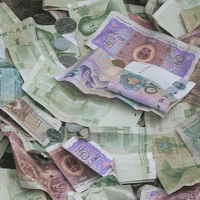Editor's note: This is the second of a two-part series. Part I examined the need for a global economic grand bargain. Part II examines what such an economic grand bargain might look like.
BEIJING -- The recent market correction and an increasingly bleak economic outlook have sharpened the case for a G-20 economic grand bargain. China has the capacity to take a lead in any such arrangement, using its $3 trillion foreign exchange reserves as bargaining chips for reshaping the global economy to better suit its interests. This could form the bedrock of broad-based and coordinated policy action to address both East-West and North-South economic imbalances.
How to put China's forex to work? Beijing has long argued that barriers to Chinese investment in the U.S., and not the value of the Chinese yuan, are what drive the bilateral trade imbalance. The truth is that both factors contribute, but with the yuan appreciating at an average of 5 percent annually since 2007 and China's forex reserves shrinking as a percentage of GDP, the onus is now on the U.S. to facilitate inbound Chinese investment and thereby speed up the process of realignment.

